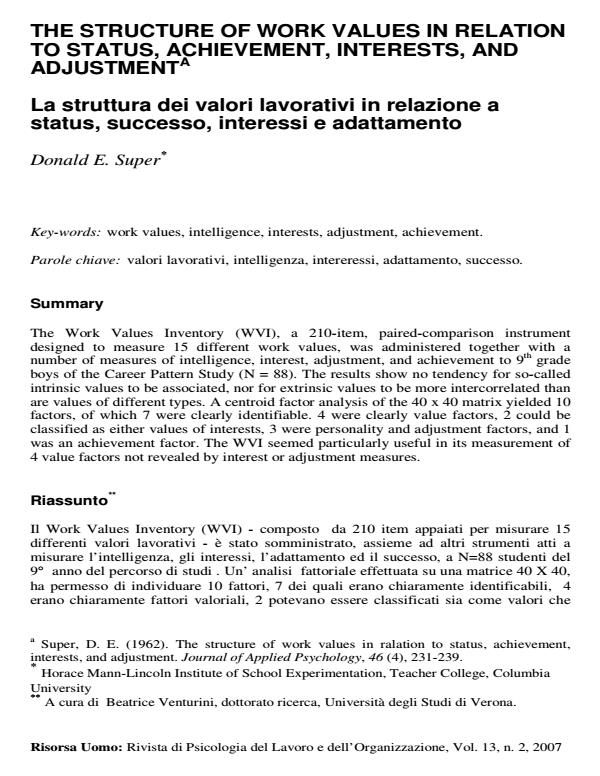The Structure of work values in relation to status, achievement, interest, and adjustment
Titolo Rivista RISORSA UOMO
Autori/Curatori Donald E. Super
Anno di pubblicazione 2007 Fascicolo 2007/2 Lingua Inglese
Numero pagine 13 P. 163-175 Dimensione file 101 KB
DOI
Il DOI è il codice a barre della proprietà intellettuale: per saperne di più
clicca qui
Qui sotto puoi vedere in anteprima la prima pagina di questo articolo.
Se questo articolo ti interessa, lo puoi acquistare (e scaricare in formato pdf) seguendo le facili indicazioni per acquistare il download credit. Acquista Download Credits per scaricare questo Articolo in formato PDF

FrancoAngeli è membro della Publishers International Linking Association, Inc (PILA)associazione indipendente e non profit per facilitare (attraverso i servizi tecnologici implementati da CrossRef.org) l’accesso degli studiosi ai contenuti digitali nelle pubblicazioni professionali e scientifiche
The Structure of work values in relation to status, achievement, interest, and adjustment (by Donald E. Super) - ABSTRACT: The Work Values Inventory (WVI), a 210-item, paired-comparison instrument designed to measure 15 different work values, was administered together with a number of measures of intelligence, interest, adjustment, and achievement to 9th grade boys of the Career Pattern Study (N = 88). The results show no tendency for so-called intrinsic values to be associated, nor for extrinsic values to be more intercorrelated than are values of different types. A centroid factor analysis of the 40 x 40 matrix yielded 10 factors, of which 7 were clearly identifiable. 4 were clearly value factors, 2 could be classified as either values of interests, 3 were personality and adjustment factors, and 1 was an achievement factor. The WVI seemed particularly useful in its measurement of 4 value factors not revealed by interest or adjustment measures.
Donald E. Super, The Structure of work values in relation to status, achievement, interest, and adjustment in "RISORSA UOMO " 2/2007, pp 163-175, DOI: